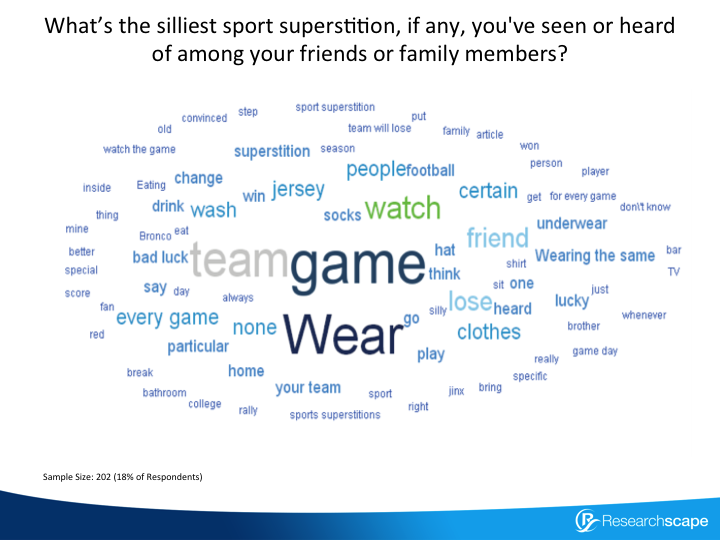by Jeffrey Henning | Oct 4, 2016 | Blog
One of the “magic” techniques for improvement representativeness is sample matching. The easiest way to think of sample matching is that is quota sampling on steroids. Now you are not trying to fill a cell of 50 respondents who are women aged 55+; you are trying to...

by Jeffrey Henning | Oct 2, 2016 | Blog, Consumer Surveys, MRX Surveys, Sports Surveys
In our survey of sports superstitions, we thought that respondents would be more willing to discuss other people’s superstitions than their own. In fact, the average answer was 13 words long when discussing others, compared to just 9 words long when discussing...
by Jeffrey Henning | Sep 27, 2016 | Blog
Given that effective sample size declines dramatically when the characteristics of the sample don’t approximate national representativeness, one method of improving non-probability sampling is quota sampling, dividing the sample into cells and recruiting to fill those...
by Jeffrey Henning | Sep 25, 2016 | Blog
We classified all respondents to our Sports Superstitions study as either “Unsuperstitious” or “Superstitious.” A respondent had to answer “Not at all paranoid”, “Not at all afraid”, and “Not at all fearful”...
by Jeffrey Henning | Sep 18, 2016 | Blog
We asked every respondent to rate their level of fear about how their actions at home might affect the team they are rooting for: while 21% of respondents are at least slightly paranoid, almost no respondents (3%) are very or completely paranoid. In qualitative...
by Jeffrey Henning | Sep 13, 2016 | Blog
Convenience sampling is almost the exact opposite of probability sampling: there is no sampling frame, there is no external random selection – anyone who comes across the survey can answer it. The results can be quite disproportionate to the target population:...


